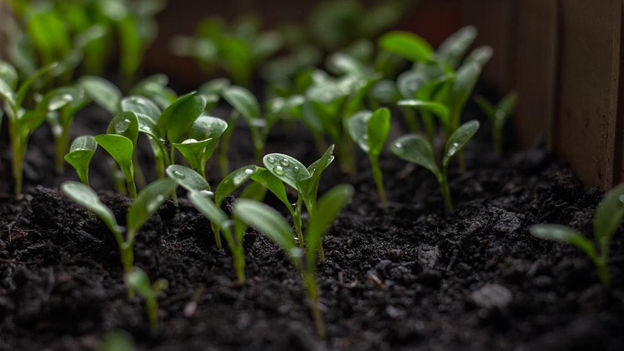Indian Soil and Raising Concerns About Soil Fertility
Over a period of time, soil productivity has become a global movement, with many Government initiatives introduced in this regard to improve soil fertility. India is a country with a population of more than 1,000 million people and the seventh largest country in the world with a geographical area of 328.7 million hectares. Agriculture is the mainstay of the Indian economy contributing about 22% to the Gross Domestic Product and providing employment to two-thirds of the population. The ever-increasing need for food to support the growing population in India demands a systematic approach to preserve its soil and climatic conditions in order to prepare effective land-use plans.
Increasing pressure on limited agricultural land in India has resulted in the overuse of chemical fertilizers, jettisoning of age-old practices of organic farming, excessive tillage and lack of appropriate crop rotation. In fact, India is the third-largest producer and consumer of fertilizers in the world which accounts for 12.2% of the world's production of Nitrogenous and Phosphatic nutrients and 12.6% of the world's consumption of NPK nutrients.
What Causes Soil Fertility Loss?
The thin layer of topsoil on the planet is the only source for almost all our food. Improper soil productivity can lead to adverse risks in terms of greenhouse gas emissions and waterways and soil bed contamination. Apart from natural factors like earthquakes, volcanoes and floods, a number of human activities like deforestation, ill-management of industrial wastage and a number of other factors are also responsible for the loss of topsoil's productive capacity.
According to research done by the Indian Institute of Soil Science has revealed that, contrary to ever-increasing food demands, the factor productivity and rate of response of crops applied fertilizers under intensive cropping systems in India are declining year after year. Conventional practices followed by farmers like leaving the land fallow for some time to allow it to regain its lost nutrition are being rapidly replaced by continuous cropping systems which have led to a decline in the soil's organic carbon content.
What Can We Do?
This brings us to the most vital question of how we can ensure that India's increasing need for foodgrain is met while at the same time the soil productivity and health are nurtured and improved. And the answer lies in turning our focus on organic products to improve soil health, propagating the judicious use of agrochemicals, reducing dependency on chemical fertilisers and reviving practices like intelligent crop rotation. The need of the hour is to educate farmers on how they can save the soil to save the environment by following practices like switching to nano fertilizers, crop rotation etc., to attain a fine balance between chemical and organic products.
The Government of India has been endorsing the use of nano fertilizers and chemical-free farming, which are vital in enhancing the efficiency of nutrients and reducing soil contamination. The Indian government has promoted the concept of 'low-cost organic farming' for a long time. For maintaining soil moisture, the “per drop more crop” campaign under initiatives like PM Krishi Sinchayi Yojana has worked wonders. The use of futuristic technology like drones for irrigation and controlled fertilizer spray is the newest addition to the efforts to preserve soil nutrients and maintain balance.
The Outlook
Soil degradation is one of the most challenging issues of our times. It's time that we walk on a path of mechanised and industrialised agriculture, which will help bring back soil fertility which has gone down significantly in the past few years. Organic farming has been found to be indigenous practice in India that has been practised for millennia. Currently, India is the largest organic producer in the world. By this, we can conclude that encouraging organic farming in India can build a nutritionally and economically healthy nation in the near future.



